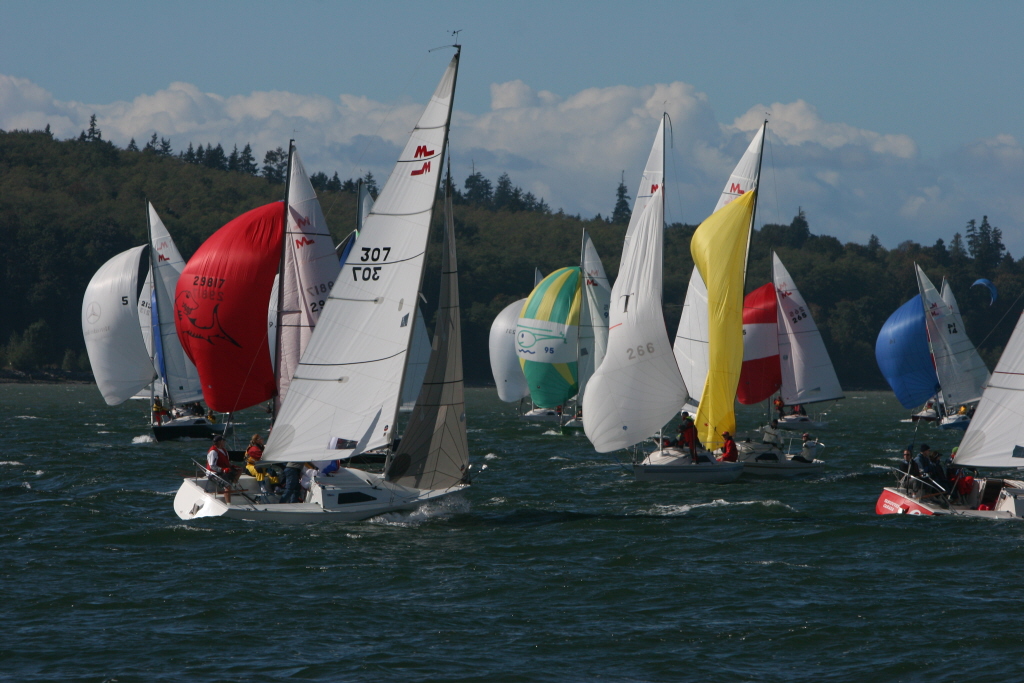No-Pole Gybe-Set Hoists - An Essential Racing Tool

Weather Mark Chaos!
Most of the time when we go around the weather mark (or the spacer if one is in place), you simply bear off, hoist the kite, and proceed merrily along on starboard gybe until you either reach the leeward mark or have to gybe for it. But wait...there is another option!
The "no-pole gybe-set hoist" - after rounding the weather mark you immediately initiate a gybe while hoisting the spinnaker.
Why would I ever attempt this crazy maneuver you ask? Three reasons to consider doing a gybe-set hoist:
- There might be more wind or beneficial current on the left side of the course, and you want to tap into that before everyone else does,
- the leeward mark or the finish line might be skewed so far to the left that you can lay it immediately on port gybe, in which case all distance travelled to the right is wasted, and
- just to avoid playing "follow-the-leader." Gybing to port immediately breaks you to everyone's left into clear air. (But be careful if there's a wall of boats behind you approaching the spacer or weather mark - there can be a lot of disturbed air if you gybe early, so a delayed gybe may be better). It also sets you up as a starboard boat coming into the leeward mark, which can be beneficial for establishing mark room or right-of-way.
So how to pull this off without wrapping the spinnaker around your shroud and mast and creating an ungodly mess of a gybe?
Step 1. Communicate to your team that it's going to be a gybe-set, and why, well before you get to the windward mark
Step 2. After rounding the windward mark, pre-sheet the starboard corner of the spinnaker past the port shrouds and get most of the spin out of the bag in someone's hands (like the foredeck person)
Step 3. As you are rounding the spacer mark and initiating a gybe, send the kite up as fast as humanly possible, or faster The crewperson flying the spinnaker from the cockpit should be pulling the sheet (and thus the spin) around to starboard as fast as possible while easing the port guy a bit
Step 4. The foredeck person takes on the role of the human spinnaker pole on the port side, grabbing onto the port shroud with the left hand hand and leaning out as far as possible with the guy in the right hand to help fill the spinnaker and stabilize it. As such they are facing backwards to the stern & crew during this maneuver. If it is necessary to face forward during the sequence, that's OK but takes more time.
Step 5. The pit person (cabin-back) now furls the jib because it's unlikely to wrap the upper section of the spinnaker in the jib
Step 6. Only when the spin is flying perfectly (and everyone agrees) does the foredeck person go for the pole and then connect it to the guy. Remember: what's important is keeping the spin flying, not racing to get the pole clipped on.
Practice this maneuver many times in advance of important races so everyone knows what to do. Failure to practice equals failure on the race course, almost guaranteed!
Practice this maneuver many times in advance of important races so everyone knows what to do. Failure to practice equals failure on the race course, almost guaranteed!